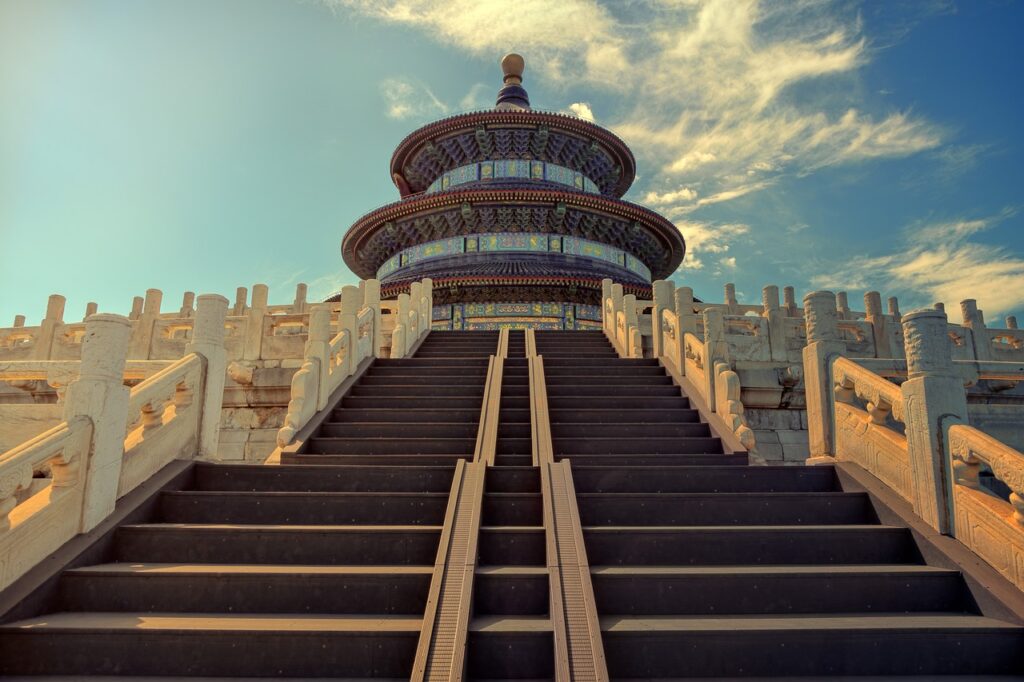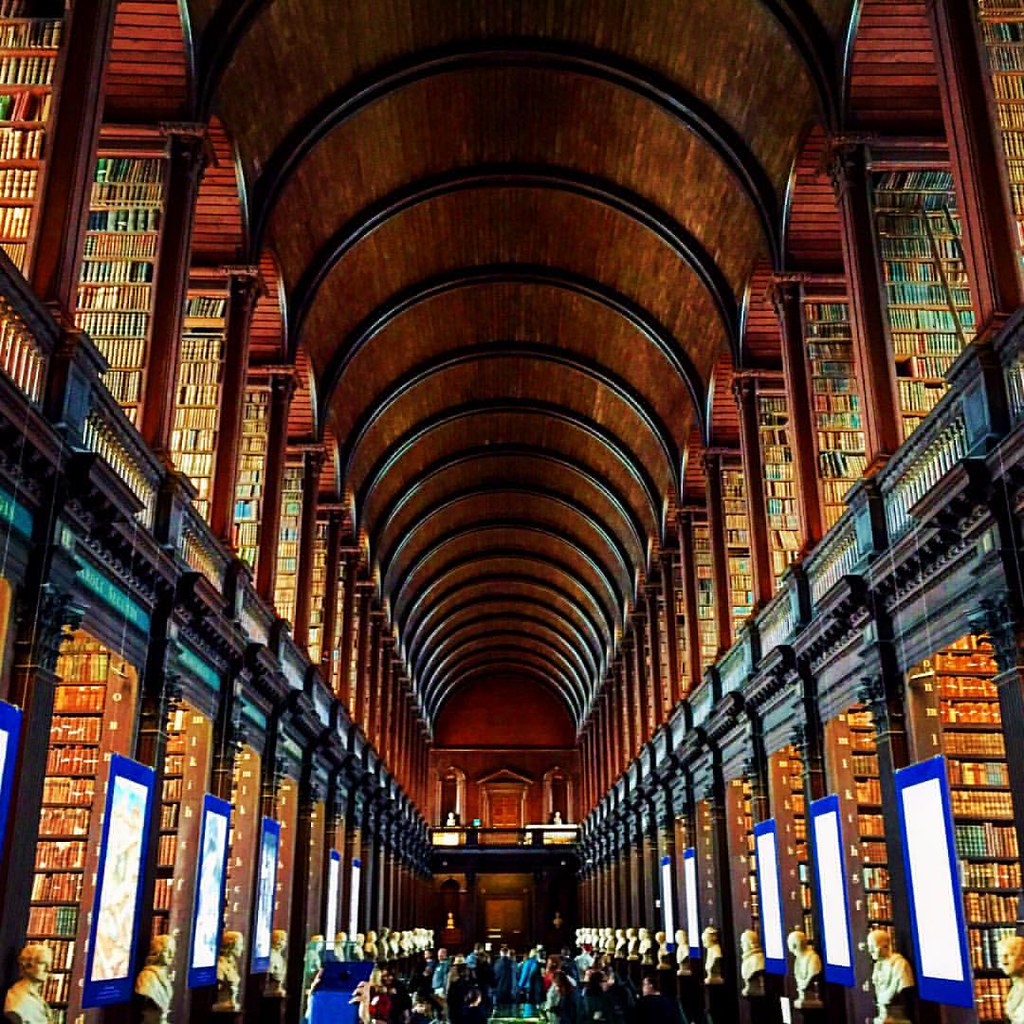Beijing, China

Beijing has a history of over 3,000 years, and it has served as the capital of several Chinese dynasties.
• Beijing became the capital of China in the 14th century during the Ming dynasty. It was known as Dadu at that time.
• In the 17th century, the Forbidden City was constructed as the imperial palace for the Ming and Qing dynasties. It served as the home of emperors of the Ming and Qing dynasties.
• In the early 20th century, Beijing was occupied by Japan during World War II. After the war, the Communist Party took control of Beijing.
• In 1949, Mao Zedong proclaimed the People’s Republic of China in Beijing. It became the capital of the new communist republic.
• In the 1950s-60s, Beijing underwent rapid reconstruction and expansion under the communist rule. Many landmarks were built, but cultural heritage sites also suffered damage.
• In the 1970s, Beijing was isolated during the Cultural Revolution. Many historical sites were destroyed. Normal relations with the outside world resumed in the 1970s.
• In 2008, Beijing hosted the Summer Olympics, which showcased a modern and globalized Beijing to the world. It helped raise Beijing’s international profile.
• Today, Beijing is a major global city and political, cultural and educational center of China. It has a population of over 20 million people. It still preserves many historical sites like the Forbidden City, Great Wall, etc.
• There is a mix of historical heritage and modern architecture in Beijing. It is a dynamic city with a rich and long history.
Here are the top tourist spots to visit in Beijing, China:
1. The Great Wall: Just an hour from Beijing, the Great Wall is one of the greatest wonders of the world. Badaling section is the most popular and accessible part of the wall. Website: The Great Wall of China (great-wallofchina.com)
2. The Forbidden City: No trip to Beijing is complete without visiting these two UNESCO World Heritage Sites. The Forbidden City was the Chinese imperial palace from the Ming dynasty to the end of the Qing dynasty. Website: https://www.forbiddencity.com.cn/eng/ and www.bmn.com.cn/en/
3. Tiananmen Square: This iconic square in central Beijing is one of the largest urban squares in the world. Surrounded by important monuments and government buildings. It is a historic landmark and popular tourist attraction.
4. Summer Palace: A vast ensemble of lakes, gardens and palaces, the Summer Palace is a masterpiece of Chinese landscape garden design. It is a popular spot for boating, walking and photography. Website: 颐和园官方网站 (summerpalace-china.com)
5. Hutongs: The Hutongs are ancient alleyways and streets in central Beijing. They provide a glimpse into traditional Beijing architecture and culture. Walking around the hutongs is like taking a journey into history. No website, best explored in person!
6. Wangfujing Pedestrian Street: This is Beijing‘s largest pedestrian street with lots of shops, restaurants, and entertainment options. It is a great place to shop for souvenirs, eat Peking duck, or just people watch. Website: www.wangfujing.org.cn
7. Beihai Park: Beihai Park is a public park and former imperial garden located in the northwestern part of the Imperial City, Beijing. First built in the 11th century, it is among the largest of all Chinese gardens and contains numerous historically important structures, palaces, and temples. http://www.beihaipark.com.cn
8. Ming Tombs: The Ming tombs are a collection of mausoleums built by the emperors of the Ming dynasty of China. The first Ming emperor’s tomb is located near his capital Nanjing. However, the majority of the Ming tombs are located in a cluster near Beijing and collectively known as the Thirteen Tombs of the Ming dynasty. Imperial Tombs of the Ming and Qing Dynasties – UNESCO World Heritage Centre
9. Beijing National Stadium (Bird‘s Nest): is an 80,000-capacity stadium designed for the 2008 Olympics and Paralympics and used again in the 2022 games. Check out an event here! Website in Chinese: 鸟巢 – 鸟巢官网,国家体育场,国家体育馆,奥运-国家体育场官方网站 (n-s.cn)
10. The Lama Temple: The Yonghe Temple, also known as the Yonghe Lamasery, or popularly as the Lama Temple, is a temple and monastery of the Gelug school of Tibetan Buddhism located on 12 Yonghegong Street, Dongcheng District, Beijing, China. The building and artwork of the temple is a combination of Han Chinese and Tibetan styles. 雍和宫 (yonghegong.cn)
11. The Temple of Heaven: is a complex of imperial religious buildings situated in the southeastern part of central Beijing. The complex was visited by the Emperors of the Ming and Qing dynasties for annual ceremonies of prayer to Heaven for a good harvest. 北京天坛 (tiantanpark.com)
WeChat is a widely used payment app throughout China.
The currency used in Beijing, China is the Chinese Yuan (CNY). Some key facts about the Chinese Yuan:
• The Yuan is the official currency of the People’s Republic of China. It is also known as Renminbi (RMB).
• The Yuan is subdivided into 10 Jiao, and 10 Jiao are subdivided into 1 Fen.
• The Yuan is not freely convertible and is controlled by the Chinese government. The exchange rate is fixed by the People‘s Bank of China.
• Coins come in denominations of 1 Jiao, 2 Jiao, 5 Jiao, 1 Yuan, 2 Yuan, 5 Yuan, and 10 Yuan.
•Banknotes come in denominations of 20 Yuan, 50 Yuan, 100 Yuan, 200 Yuan, 500 Yuan, 1000 Yuan, 2000 Yuan, and 5000 Yuan.
Beijing has a semi-arid climate with cold winters and hot, humid summers. Some key facts:
• Winters are cold, with average high temperatures around 38 F / 3 C and lows around 23 F / -5 C in January. Occasionally temperatures can drop below -4 F / -20 C.
• Summers are hot and humid, with average highs around 82 F / 28 C and lows around 66 F / 19 C in July and August. Humidity is high in summer, around 70-80%.
• Beijing gets little precipitation, with most rain falling in summer. Winters are very dry.
• Beijing is located in a valley, so air pollution and smog are major problems, especially in winter.
• The best times to visit Beijing for pleasant weather are spring (April to June) and fall (September to October).
CHECK TRANSIT VISA REQUIREMENTS. BEIJING AND DIFFERENT AREAS OF CHINA HAVE DIFFERENT REQUIREMENTS FROM ONE ANOTHER.
The major airports in Beijing, China are:
1. Beijing Capital International Airport (PEK) – This is Beijing’s largest airport and the main international airport. It is located about 20 km southeast of central Beijing. Website: https://www.bcia.com.cn
2. Beijing Nanyuan Airport (NAN) – This is a domestic airport located in the southern suburbs of Beijing. It mainly handles flights to cities in northern and northeastern China. Website: http://www.bjnya.com
3. Beijing Xijiao Airport (BJX) – This is a small airport located in the western suburbs of Beijing. It mainly handles flights to cities in northwestern China. Website: http://www.bjxja.com
4. Beijing Daxing International Airport (PKX) – This is Beijing’s second international airport located in the southern suburbs. It started operations in 2019 and is designed to eventually replace Beijing Capital International Airport. Website: https://www.daxingairport.com/
5. Beijing Badaling Airport (BDL) – This small airport located near Badaling serves mainly as a shuttle airport for tourists visiting the Badaling section of the Great Wall. Website: http://www.bjbadalingairport.com
Beijing has a well-developed public transportation system. The main options include:
• Subway: Beijing has a vast subway network with over 20 lines that cover most of the city. It is fast, frequent and affordable. Website: 北京地铁 (bjsubway.com)
• Buses: Beijing has a bus system with over 300 bus routes covering the entire city. Buses run from early morning until late at night. Website: 北京公共交通集团-|线路查询|公交换乘|商务班车|定制公交|公交e路通|实时公交 (bjbus.com)
• Taxis: Taxis are readily available in Beijing but can be expensive, especially during peak hours. Many taxis run on meter.
• Bike sharing: Beijing has a popular bike sharing system with thousands of bikes and docking stations across the city. It is a great way to get around and experience Beijing. Website: www.mobike.com
• Rail: There are also suburban rail lines connecting Beijing to nearby cities and towns. High-speed rail links Beijing to other major cities in China. Website: China Railway (china-railway.com.cn)
• Private cars: Driving in Beijing can be challenging due to traffic and limited parking. Renting a car is possible but not very practical for getting around the city.
Coming Soon!
Coming Soon!
Coming Soon!
• The Zhangjiajie National Forest Park. About 3.5 hours from Beijing, this park features stunning mountains, waterfalls and forests. It was an inspiration for the floating mountains in the movie Avatar.
• The Chengde Imperial Garden. A spectacular imperial garden complex about 2 hours from Beijing, featuring palaces, temples, lakes and European-style architecture.
• The Puning Temple. A well-preserved Buddhist temple complex in Chengde with halls, courtyards, gardens and a library.
• Shilinxia Glass Viewing Platform: This unique circular bridge juts out 32m (105ft) over and 400m (1312ft) above the Jingdong Stone Forest Gorge. It is 70km (43 miles) from Beijing.
• Tanzhe Temple: For an insight into China’s ancient world, check out one of the oldest Buddhist temples in the country. Only about 1 hour from the city center, you’ll find the complex encircled by 1,000 Ginko Trees.
• Caves of Zhoukoudian: house important fossils of early humans who settled in the area. Takes about two and half hours Southwest to reach the prehistoric city and caves.
• Marco Polo Bridge: just outside of Beijing, the bridge has stood there since 1192. The bridge is named after Marco Polo’s praise of it in his book. He wrote: “Over this river there is a very fine stone bridge, so fine indeed, that it has very few equals in the world.”
• Miaofeng Mountain and Niang Niang Miao Temple: offers a scenic hike up the mountain to find the Niang Niang Miao Temple, which was erected during the Ming Dynasty.
• Jetai Monastery: Built in 622, during the Tang Dynasty, it’s a central Buddhist temple in China, as it is where monks and nuns to go to achieve their highest status. It was originally called the Huiju Temple (Wisdom Accumulation Temple) ans is located on the mountainside of the Ma’an mountain approximately 25 kilometers from downtown Beijing. 北京戒台寺官方网站 (bjjietaisi.com)




